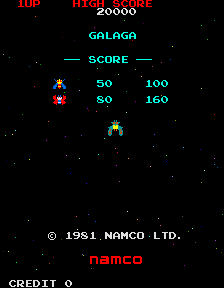Galaga (Namco)
Game Information
| manufacturer | Namco |
| year | 1981 |
| clone of | galaga |
| other clones | galagamf galagamk galagamw galagao gallag gatsbee nebulbee |
| genre | Shoot-'Em-Up |
| downloads | 186 |
Screenshots










Download Details
| split set | galagao.zip 13.14k |
| parent set | galaga.zip 22.63k ↗ |
| bios/device | namco51.zip 716.00b |
| bios/device | namco54.zip 592.00b |
| standalone set | galagao.7z 20.59k |
Driver Details
| source | namco/galaga.cpp |
| status | good |
| emulation | good |
| savestate | supported |
Series Details
Screen Details
| display | screen |
| type | raster |
| orientation | horizontal |
| width | 288px |
| height | 224px |
| refresh | 60.61mhz |
Input Details
| player | 1 |
| type | joy |
| buttons | 1 |
| directions | 2 |
| player | 2 |
| type | joy |
| buttons | 1 |
| directions | 2 |
Chipset Details
| name | Zilog Z80 |
| clock | 2.93mhz |
| name | Zilog Z80 |
| clock | 2.93mhz |
| name | Zilog Z80 |
| clock | 2.93mhz |
| name | Fujitsu MB8843 |
| clock | 1.46mhz |
| name | Fujitsu MB8844 |
| clock | 1.46mhz |
| name | Speaker |
| clock | N/A |
| name | Namco |
| clock | 93.75khz |
| name | Discrete Sound |
| clock | N/A |
ROM Details
| name | size | crc |
|---|---|---|
| gg1-1.3p | 4.00k | a3a0f743 |
| gg1-2.3m | 4.00k | 43bb0d5c |
| gg1-3.2m | 4.00k | 753ce503 |
| gg1-4.2l | 4.00k | 83874442 |
| gg1-5.3f | 4.00k | 3102fccd |
| gg1-7.2c | 4.00k | 8995088d |
| gg1-9.4l | 4.00k | 58b2f47c |
| gg1-11.4d | 4.00k | ad447c80 |
| gg1-10.4f | 4.00k | dd6f1afc |
| prom-5.5n | 32.00b | 54603c6b |
| prom-4.2n | 256.00b | 59b6edab |
| prom-3.1c | 256.00b | 4a04bb6b |
| prom-1.1d | 256.00b | 7a2815b4 |
| prom-2.5c | 256.00b | 77245b66 |